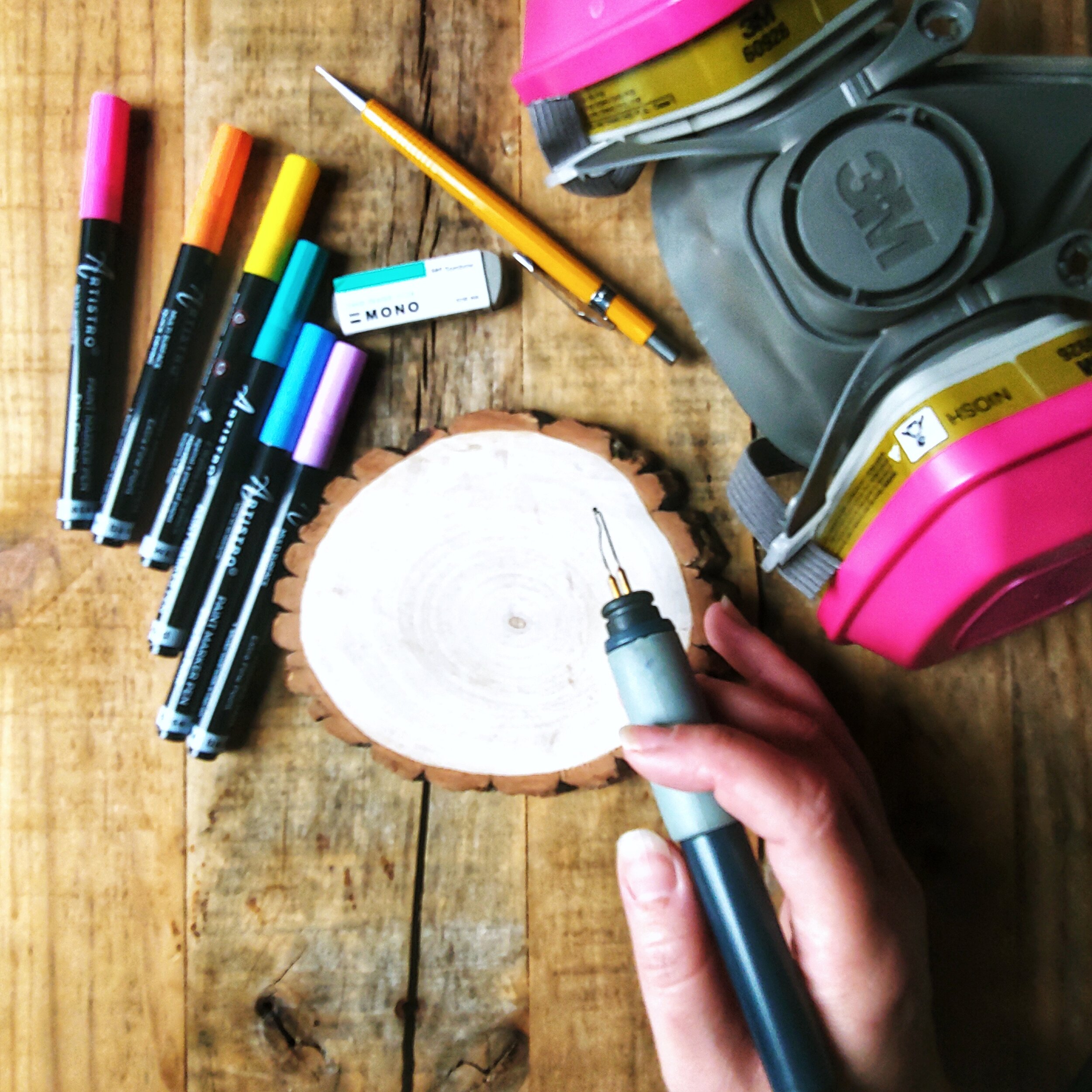You have a unique living/working situation, can you tell us about that?
Sure! I live in a 2018 Travel Trailer (camper). We are going on 2 years living in it full time. When we can, we travel the country. So far we have been out West and loved it!
Tell us a little about your business and what you make.
I am a self-taught wood burning artists. I love to make bold and colorful works of art of all types, however, my specialty is line art and texture.
You have another business, Happidesk. Can you tell us a little about that?
Of course! @Happidesk is where I conduct my business as a virtual assistant. Although my main focus is Real Estate, I also help many small business with things like: Social Media Management, Branding, Design, and Engagement. I help accounts authentically connect and grow with their target audience.
What percentage of your time do you spend wood burning versus business? How much of your time is devoted to Happicamper vs Happidesk?
Great question! Typically Monday thru Friday I spend on Happi Desk, using my evenings to engage on Happi Camper when I can. I do my best to dedicate Friday night thru Sunday night to making art and content for Happi Camper.
What other hobbies/crafts do you enjoy?
I also enjoy watercolor and illustration. I can't forget travel! I love exploring new areas, especially anything flora/fauna related.
Where do you draw inspiration?
Definitely from our surroundings. I love nature and find lots of new plants/places to research then apply to my art. I also draw a lot of inspiration from vintage styles.
What piece of advice can you offer to anyone who is new to wood burning or new to the community?
Do not "compare and despair". At the end of the day, social media can go away. Only compare yourself to your growth path, and not others. You are so unqiue; no one in the world is like YOU. So the more you lean into your own authenticity and forget about all the like/followers noise, the better you'll be in the end.
Any quick tips for growing your Instagram following? What has worked for you?
Sure! I follow the 10-10-10 on a daily basis. Ten minutes liking and commenting on my current followings' posts. Ten minutes connecting with my current followings' stories through genuine DMs. And ten minutes connecting with my target audience through recent posts in niche hashtags.
What other platforms do you use and enjoy besides Instagram? Any that you have found success with when it comes to reach and exposure?
I have used Pinterest with some success. I also use Etsy as a connection platform, especially for networking. Liking and favoriting others shops is a great gateway to collaborations.
If you could give advice to yourself when you first started out, what would that be?
Get more back-up pens! Since I burn so hot and heavy, I go thru pens very quickly!
Are there any apps that you can’t live without when it comes to your business?
A scheduler. I love Apphi, and have also used the Later app. This helps me keep my posts up at peak times, plan ahead, and maintain a brand presence.
Deserted Island, with power question. You can choose ONE
Burner: Colwood Super Pro II
Nib: Spade Tip
Type of wood: Poplar
Non-essential tool (but basically essential to you): Tombow sand eraser
Choosing what tools you keep on hand has to be a thoughtful process because of space limitations, so I am curious what are some of your other favorite tools you have in your toolbox?
Acrylic paint pens have been a lifesaver for me. They take up SUCH little space and are so easy to use!
How do you finish your pieces?
I use an aerosol polycrylic gloss finish. It really make the texture pop!
What are your favorite ways to add color?
Lately, it is def the paint pens. But I also favorite other types of mediums like milk paint and watercolors.
What goals do you have for Happi Camper? What art goals do you have?
One day, I would love to have some land, build a cabin, and renovate a handful of vintage campers. It would be an Air B-n-B where I could also host wood burning workshops. Short term goals def include teaching wood burning workshops in the Kansas City area!
What are your favorite podcasts and inspirational books?
I listen to the Joe Rogan podcast, as well as Russell Brand. But honestly, I'm not much of a podcast listener. My favorite inspirational book is, "You Can Heal Your Life" by Louise Hays.
I think we are all very curious as to how you can fit all of your wood burning supplies into the camper. Can you show us some of your storage solutions?
I have to thank my hubby here. He is the organization GURU. We keep my art supplies in baskets separated by type. We even label everything so it's easy to grab. I also bundle supplies in re-purposed Ipsy bags. One bag has everything I need to start sketching a new piece, and houses some of my main nibs.
What are you working on now?
I am currently working on a few geometric shelves as I shift to making more functional art. I also have a new wood sign commissions in the pipeline.
Watch the recorded live video:













